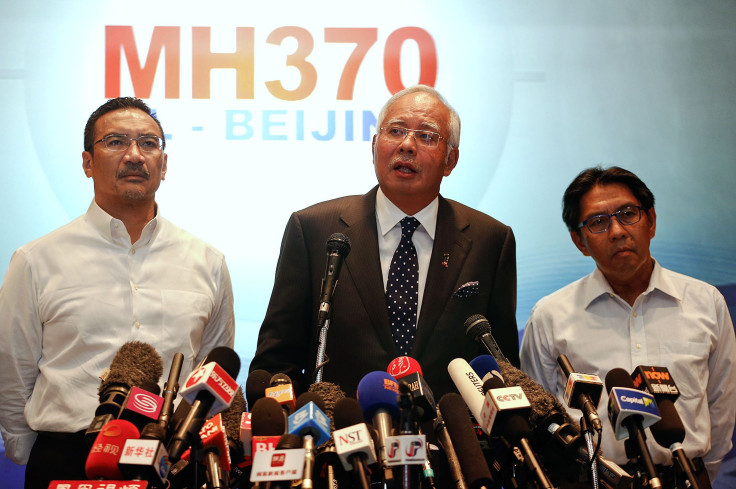Was Malaysia Airlines Flight 370 Crash A Suicide? It Wouldn’t Be The First Time A Pilot ‘Deliberately’ Took Down A Plane

After evidence recently surfaced that Malaysia Airlines Flight 370 had been “deliberately” flown off course before it presumably crashed somewhere over the Indian Ocean, officials have turned their attention to the missing plane’s two pilots and crew. Among several scenarios that could have led to the plane’s mysterious disappearance, including a possible hijacking, pilot suicide is being considered.
Early Saturday morning, Malaysia’s Prime Minister Najib Razak said that the latest evidence suggests the jet didn’t experience an in-flight catastrophe over the South China Sea, as was the initial suspicion. Instead, investigators believe someone with knowledge of how to fly a Boeing 777 intervened and redirected the plane west after its final radio contact with air traffic controllers. There is confirmation that Flight 370’s transponder stopped about 12 minutes before the jet’s messaging system also quit. This gap suggests there was no sudden emergency, and officials say the pilots themselves may have diverted the plane.
“A pilot rather than a hijacker is more likely to be able to switch off the communications equipment,” Mike Glynn, a committee member of the Australian and International Pilots Association, told CBS News.
Other evidence points to the likelihood that a trained pilot continued to steer the plane after the aircraft rerouted. After Flight 370 changed course, it flew along a known navigational route, which suggests the person who was behind the controls was familiar with flight corridors in the area, according to Reuters.
"[The course] could only have been set deliberately, either by flying the Boeing 777-200ER jet manually or by programming the autopilot,” Reuters reported.
While several questions about the disappearance remain, Glynn said he believes pilot suicide to be the most likely explanation for flight 370’s demise.
Could either of the pilots have intentionally plunged the aircraft carrying 227 passengers and 12 crew members into the ocean? If either 53-year-old Zaharie Ahmad Shah or 27-year-old Fariq Abdul Hamid, whose psychological backgrounds will be thoroughly picked apart as officials begin to probe into the pilots’ pasts, had committed suicide, it wouldn’t be the first time a pilot was suspected of killing himself from the cockpit.
In October 1999, EgyptAir Flight 990 crashed into the Atlantic Ocean just south of Nantucket, Mass., shortly after it left JFK Airport. An investigation by the National Transportation Safety Board, or NTSB, determined that the co-pilot of the aircraft, Gameel Al-Batouti, had quite possibly caused the crash on purpose.
According to the NTSB report, when the captain of the plane stepped away to use the bathroom, Al-Batouti disconnected the autopilot and put the plane into a nosedive. Cockpit voice recorder records picked up Al-Batouti quietly stating over and over again the phrase, “I rely on God,” as he descended the plane.
When the captain returned to the cockpit, he immediately tried to right the plane by pulling up one of the throttle levers, but Al-Batouti continued to press his forwards, even after the captain repeatedly stated, “Pull with me.”
All 217 people on board were killed when the plane plunged into the Atlantic Ocean.
While the Egyptian Civil Aviation Authority repeatedly rejected the idea that the co-pilot intentionally crashed the aircraft, the NTSB pointed to the fact that there was no evidence of mechanical failure that could have caused the plane to go down. The NTSB also cited the co-pilot’s calm demeanor and lack of surprise when the plane suddenly descended.
So far, as information about the Malaysian pilots has surfaced, investigators have no evidence linking them to any wrongdoing. Several friends and family members of the pilots have rushed to defend the pilots’ reputations, Associated Press notes. Zaharie Ahmad Shah was described as a middle-aged family man with a passion for flying, and Fariq Abdul Hamid was painted as a young and intelligent pilot who was considering marriage.
"He is a good student. He worked very hard to get where he was. His parents are so proud of him," one relative of Fariq Abdul Hamid told Reuters. "And now, there is news that he was someone else. It is a very cruel thing to do at this time. We just want him to be safe.”
© Copyright IBTimes 2024. All rights reserved.






















